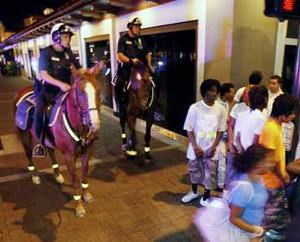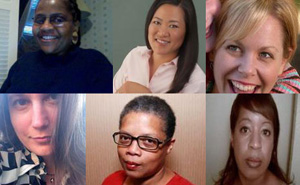
Work of Martin Luther King Unfinished
January 16, 2014
Black Teenagers in Upscale Venues
February 22, 2014By Janice S. Ellis, Ph.D., Kansas City, MO –
Is it time to rethink how we think of race? There’s just one race, the human race, but many ethnic groups.
Race is a construct whose precise origin nevertheless remains in dispute among scholars. However, there’s a big body of scholars in social sciences and the humanities that supports race is a modern concept constructed under particular economic, societal and historical states – frequently to create and perpetuate power, servitude and superiority.
While the continued focus of a great deal of academic scholarship, the area of race has managed to escape informed and sustained public dialogue. Since President Barack Obama’s election, many would like to believe a public and sustained conversation about race isn’t any longer crucial.
In many circles, race is a taboo topic to be averted as we go about our daily lives where an honest conversation is needed. We are fine with the issue of race being dismissed or just addressed when some blatant and ugly episode makes it inevitable and calls into question, at the moment, our own sense of decency if we choose to remain silent.
Why not abandon once and for all times the man-made notions of race, which have and continue to do more harm than good? We have enabled other cosmetic differences like the texture of hair, color of eyes and the color and colors of skin to shape our opinions of whole groups of individuals. When beyond the surface differences, frequently the consequences of geographical and environmental forces, we’re all 99.99999… percentage the same. The Human Genome study’s results have conclusively demonstrated that. Like attractiveness, the notion of race is merely skin deep.
So, why do we persist in hanging on to the false notions that there are several races? There’s one race the human race, which happens to have many ethnic groups. Many ethnic groups one race should be our mantra.
Clearly, this will require a new and careful way of thinking to bring about such a radical change of the definition of race on a comprehensive scale. But important changes occur over time. Like fruit- producing trees, the seeds are ripe long before we harvest and eat the fruit.
Like every great change movement, there will be resistance and there will be those that will never embrace the change. But we must start someplace. Many individuals believe that the negative perceptions around race will shift with the younger generations, and older generations are a lost cause. But, the changes that are needed will not happen by themselves. We must be committed to the notion of many ethnic groups one race.
There must be purposeful efforts by adults, present and older generations, to prepare and re-educate, beginning with ourselves and passing it on to our children. Prejudices, actions of discrimination happen on a daily basis among the young people due to what we have passed on.
If we ever expect to alter the view of race, as grownups, and quit allowing it to be a divisive force in our daily lives, we must we willing to accept that there’s one race, one humanity, we hold in common; and give to understanding the ethnic and cultural differences that make us unique, interesting, and occasionally challenging.
One race, and many ethnic groups. Why not try it on? Wear it. Pass it on. Play it.
What have you got to lose, except a false sense of superiority and close-mindedness?
Edited and Reprinted with Permission of USAonRace.com

